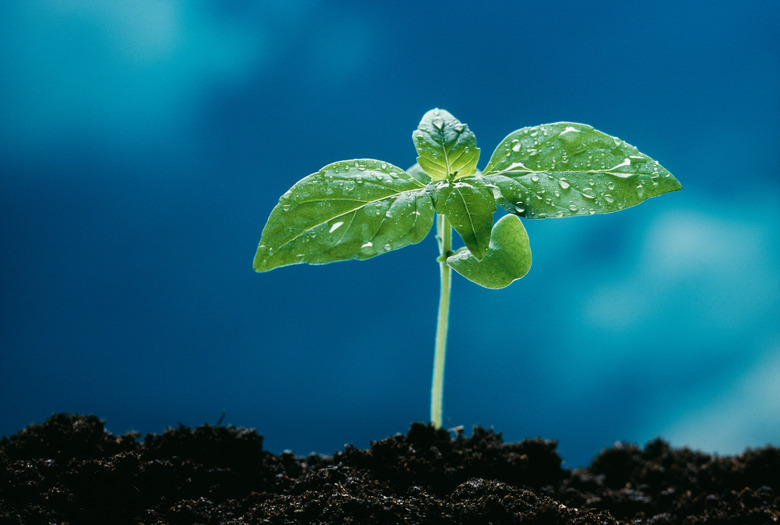Information For Kids About Ecosystems
People who study ecosystems are called ecologists. Anyone interested in how animals and plants interact with each other and their environment is an ecologist. Because ecosystems are very complicated, there is a lot people still don't know, and they can be confusing to understand at first. Basic ecosystem information for kids is important to understand because people all live in ecosystems and rely on them to survive.
Ecosystem Definition for Kids
Ecosystem Definition for Kids
Ecosystems are any area where living creatures such as plants and animals interact with non-living things like soil, water, temperature and air. Ecosystems come in different sizes. An ecosystem can be as big as the entire planet or as little as the tiny bacteria you can't see that live on your skin.
There are many different types of ecosystems including:
- Lakes
- Deep oceans
- Coral reefs
- Mangroves
- Swamps
- Forests
- Jungles
- Deserts
- City parks
Ecosystem Facts for Kids
Ecosystem Facts for Kids
Living animals and plants interact with their non-living environment in many ways. For example, plants need soil, water and sunshine to make their food and grow. Animals also need to drink clean water and breathe fresh air to survive.
An ecosystem also includes the **interactions between living creatures.** For example, plants and animals eat each other to live, many animals pollinate flowers or spread their seeds to help plants reproduce, and animals may use plants or other animals to help them remove parasites. It is these types of complicated interactions that make an ecosystem.
Basic Grassland Ecosystem Example
Basic Grassland Ecosystem Example
Firstly, the grass grows by getting nutrients from the soil, using sunshine and water to make food in a process called **photosynthesis**. A by-product of photosynthesis is the production of oxygen. Animals breathe the oxygen, drink water and many, like gazelles, eat the grass.
Lions then hunt the gazelles to feed their pride. When an animal, like the lion, dies their body breaks down back into the Earth, enriching the soil. The grasses then get more nutrients to keep growing, producing oxygen and continuing the cycle.
The Importance of Ecosystems
The Importance of Ecosystems
Ecosystems are very important to humans because they give ecosystem services, which help you live and make people's lives more enjoyable. Important ecosystem services include the production of oxygen by plants for animals to breathe, availability of clean, fresh water for drinking and the ability to grow food from healthy soils. Humans also rely on trees, rocks and soil to build houses, cities and walls for shelter and protection.
Ecosystem services have also provided humans with **vibrant cultures.** Throughout history, people have been inspired to write poetry and stories about the natural world. Humans use plants to make dyes and paints to decorate clothes and buildings. Humans also use minerals and stones like diamonds, emeralds and shells to create beautiful jewelry and accessories.
Even the technology humans rely on today is an **ecosystem service.** The components of computers, such as lithium batteries, are derived from natural sources. For example, liquid crystal display (LCD) screens are composed of the natural resources aluminum and silicon. Silica glass, which makes up 59 percent of the Earth's crust, is used to make the fiber optic cables that deliver internet to your house.
Caring for Ecosystems
Caring for Ecosystems
Humans can all do our part to help look after the ecosystems that give life. Two easy things people can do at home to help look after ecosystems are recycling and carefully selecting products from companies that minimize their negative impact on the environment by not producing pollution, using pesticides and cutting down forests.
Also, remember that ecosystems can be as small as your backyard. By placing plants that native animals like to feed on or live in, you can help support local ecosystems.
References
- Recycling Facts Guide: How to Understand the Ecosystem for Kids
- The East African: Minerals in Your Mobile Phone
- Encyclopaedia Britannica: Silica
- Encyclopaedia Britannica: Fiber Optics
- Encyclopaedia Britannica: Glass
- Nasa: 10 Interesting Things About Ecosystems
- The Good Growth Partnership: Generating Responsible Demand for Reduced Deforestation Commodities
- Ecological Landscaping Alliance: Going Native, The Sustainable Choice
- FAO: Regulagting Services
- FAO: Supporting Services
- Ecosystem Services: Cultural Ecosystem Services as a Gateway for Improving Urban Sustainability
Cite This Article
MLA
Jerrett, Adrianne. "Information For Kids About Ecosystems" sciencing.com, https://www.sciencing.com/information-kids-ecosystems-5780652/. 31 July 2019.
APA
Jerrett, Adrianne. (2019, July 31). Information For Kids About Ecosystems. sciencing.com. Retrieved from https://www.sciencing.com/information-kids-ecosystems-5780652/
Chicago
Jerrett, Adrianne. Information For Kids About Ecosystems last modified August 30, 2022. https://www.sciencing.com/information-kids-ecosystems-5780652/
